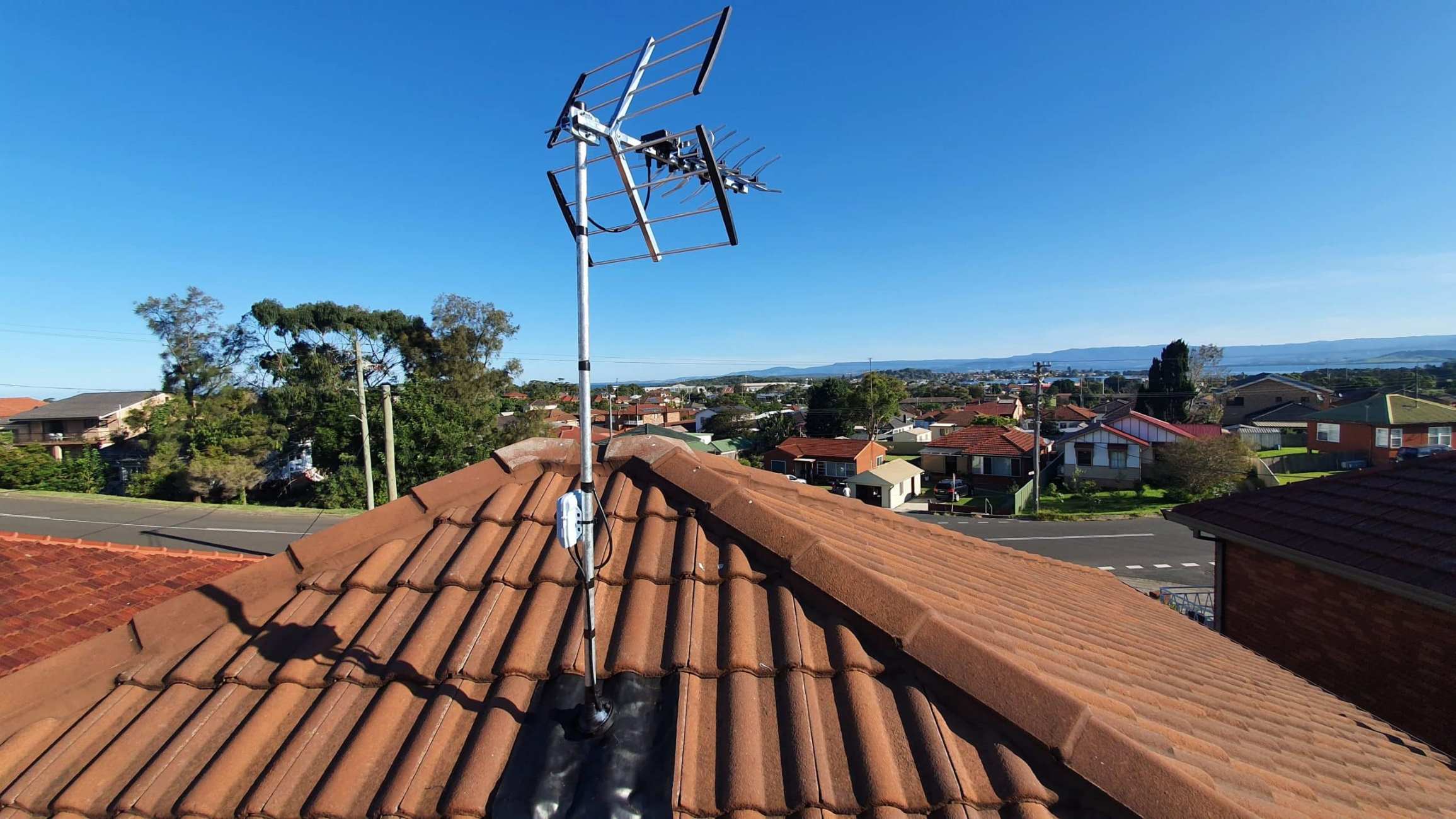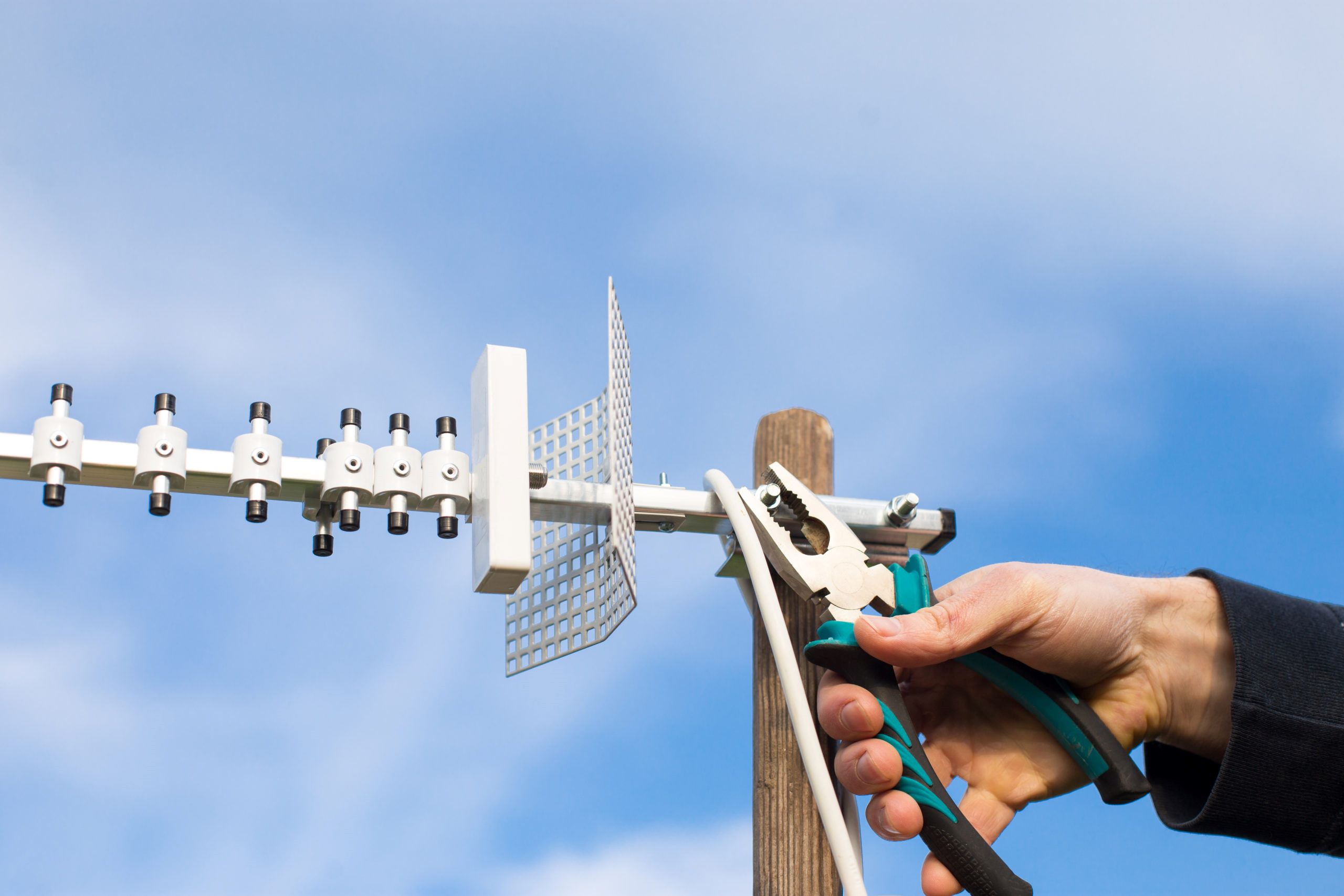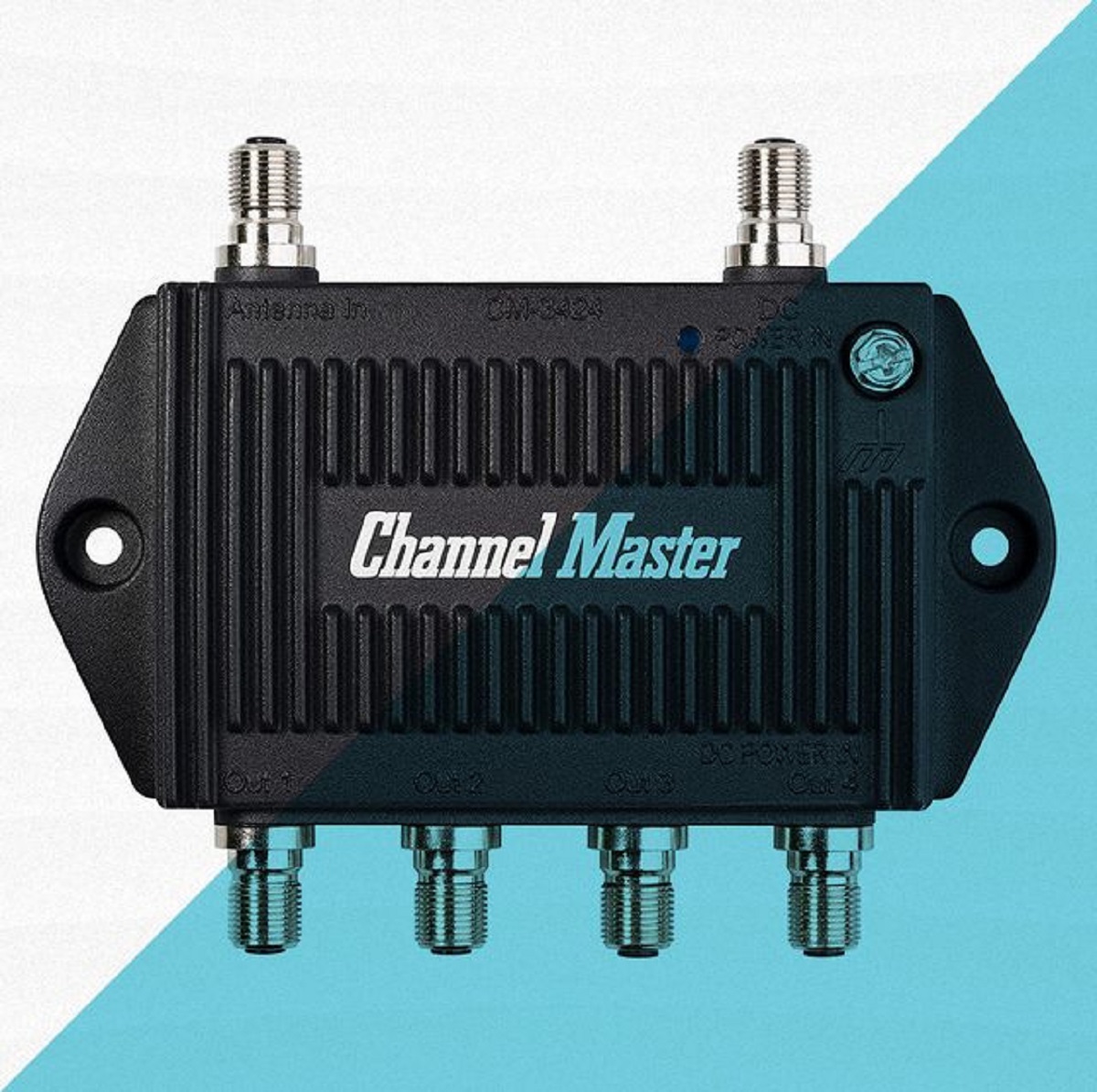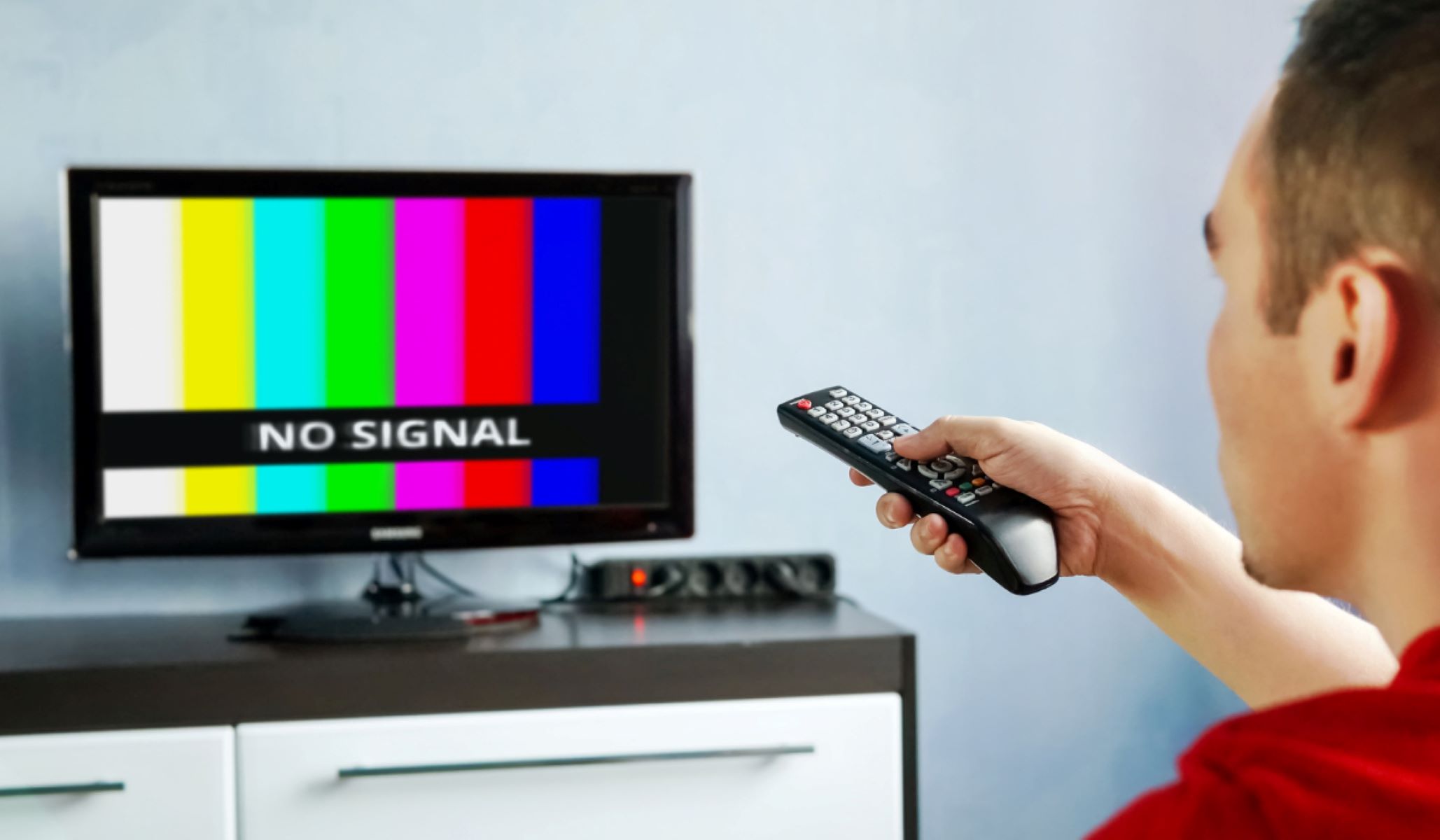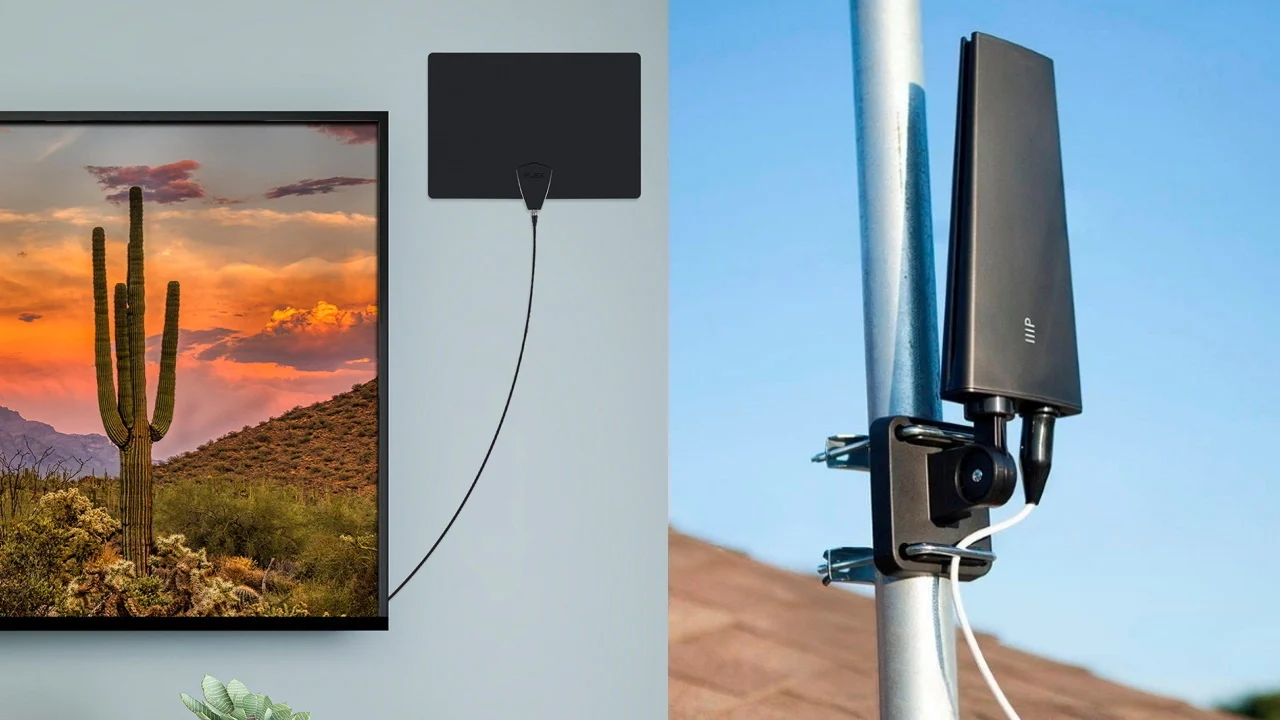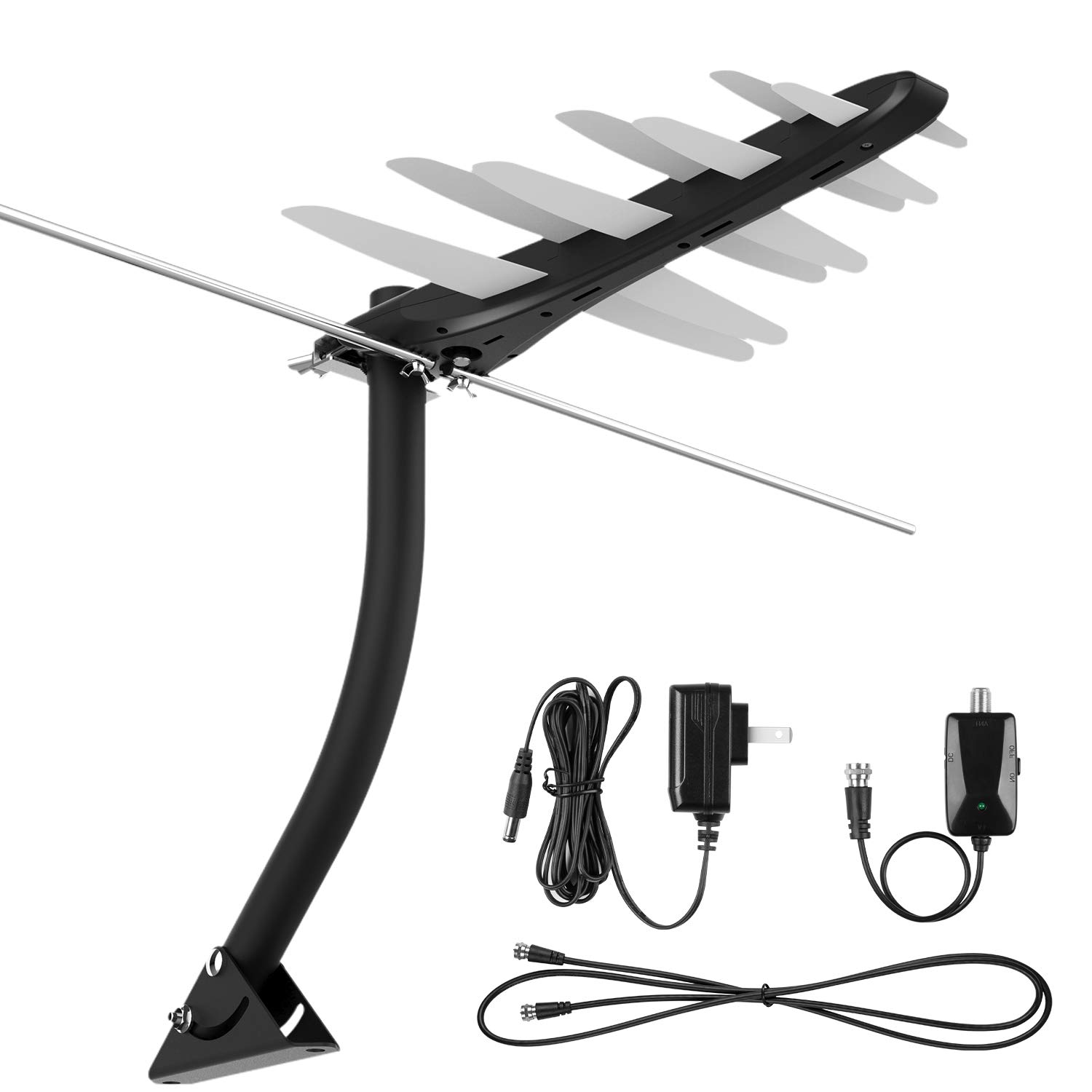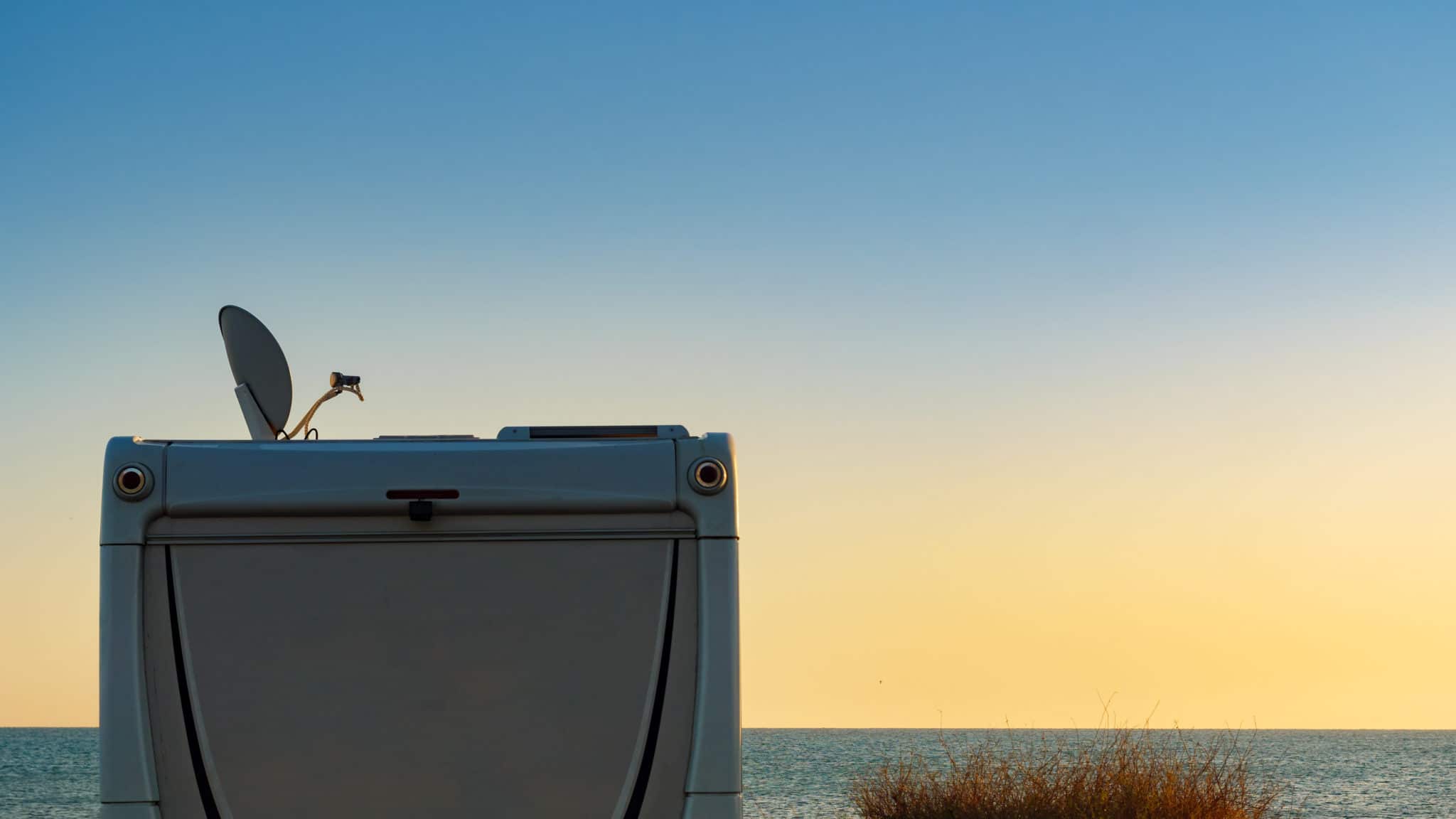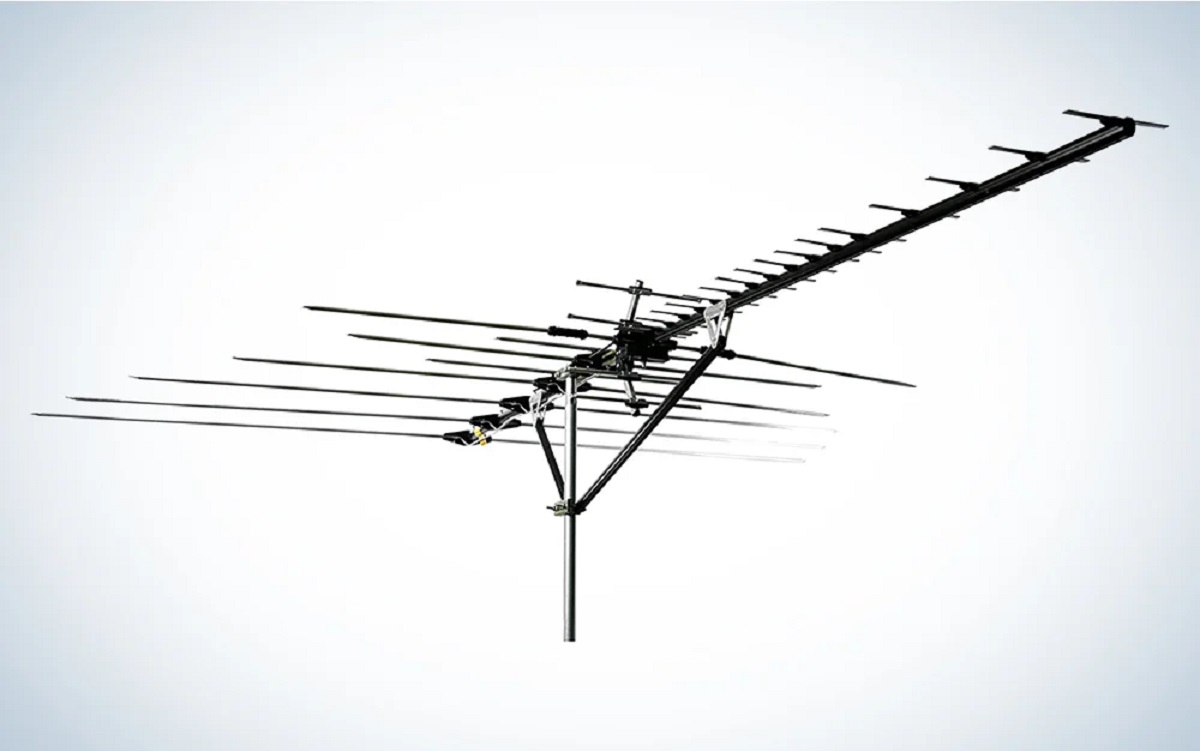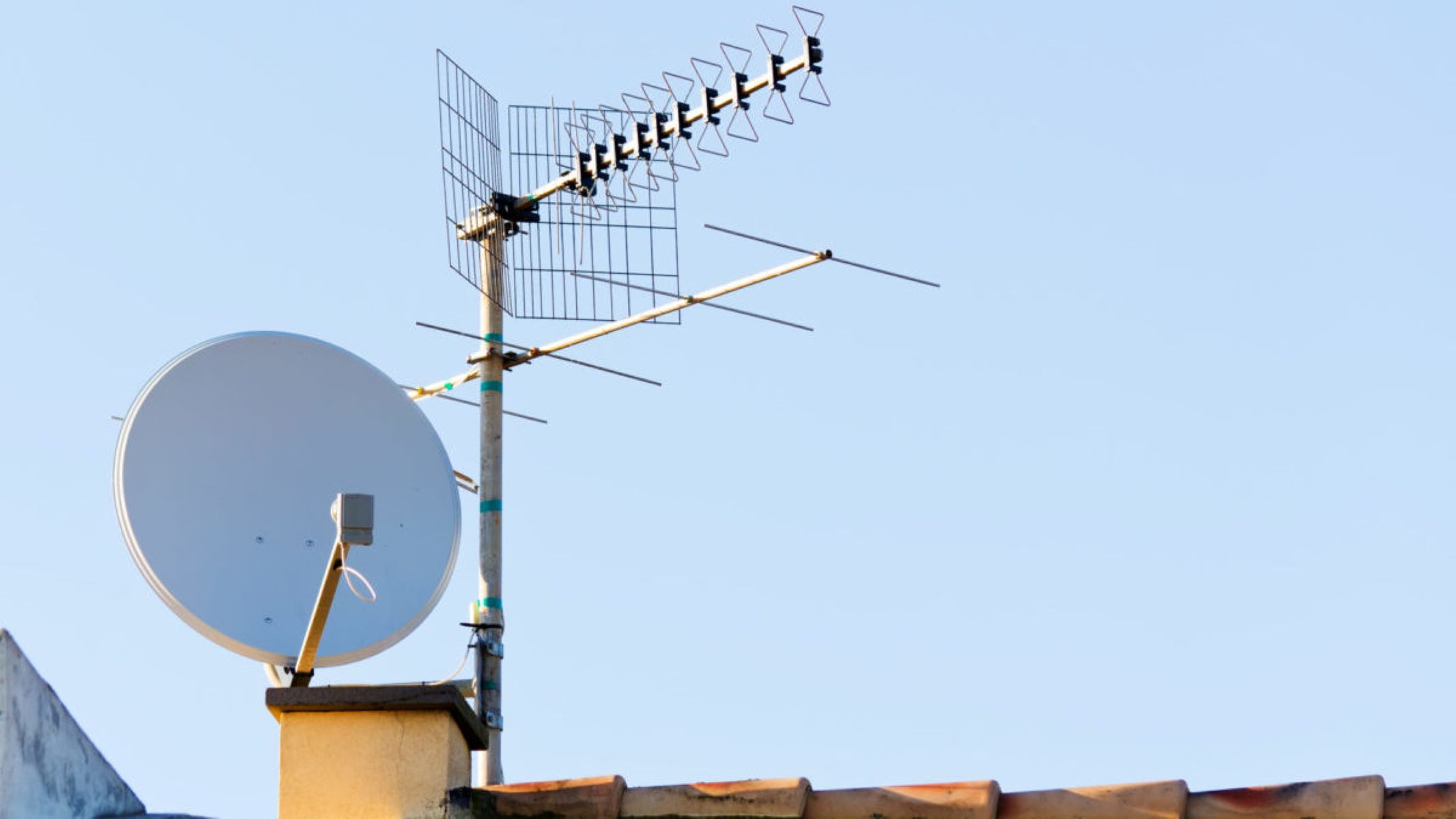Introduction
Welcome to our guide on what interferes with TV antenna reception. Have you ever experienced a frustrating situation where your TV antenna fails to deliver a clear and crisp signal? It can be incredibly annoying, especially when you’re trying to catch your favorite shows or enjoy a movie night with your family. In this comprehensive article, we will explore the various factors that can interfere with TV antenna reception and provide insights into how you can overcome these challenges.
Television antennas have long been a reliable and cost-effective method of receiving over-the-air TV signals. However, there are several factors that can disrupt the quality of the received signal, leading to pixelated images, sound disturbances, or even a complete loss of signal. Understanding these interference sources is crucial in optimizing your antenna setup to receive optimal reception.
From physical obstructions to electrical interference, weather conditions, antenna placement, and even the type of antenna used, each factor plays a significant role in determining the quality of your TV reception. Let’s dive in and explore these factors in detail.
Physical Obstructions
One of the main factors that can interfere with TV antenna reception is physical obstructions. Buildings, trees, mountains, and even tall structures in the vicinity can obstruct the path between your antenna and the broadcast tower, causing a weakened or blocked signal.
When these obstructions come in between the line of sight of your antenna and the tower, they can disrupt the signal and result in poor reception. The signal may become weaker or experience reflections and multipath interference, where signals bounce off buildings or objects and reach your antenna at different angles.
To mitigate physical obstructions, it’s important to carefully consider the placement and height of your TV antenna. If possible, install your antenna in a location where it has a clear and unobstructed view of the broadcast tower. For outdoor antennas, positioning them on a rooftop or at a higher elevation can often help overcome the obstacles and improve reception.
In some cases, using a taller mast or a rotatable antenna can be beneficial, as it allows you to adjust the direction and angle of the antenna to find the best signal path without obstructions. Additionally, trimming or removing trees that obstruct the line of sight of your antenna can also have a positive impact on reception.
It’s worth noting that physical obstructions can vary depending on your geographic location. Urban areas with tall buildings and dense trees may pose more significant challenges compared to rural areas with open landscapes. Understanding the specific characteristics of your location and taking appropriate measures to minimize physical obstructions can greatly enhance your TV antenna reception.
Distance from Broadcast Towers
The distance between your TV antenna and the nearest broadcast towers is another crucial factor that can impact reception. As you move farther away from the towers, the strength of the signal decreases, resulting in weaker reception and potential signal loss.
When the signal travels a long distance, it can encounter more obstacles and suffer from attenuation, which is the gradual weakening of the signal strength. This can lead to pixelation, fuzzy images, and audio disruptions on your TV screen.
If you live in a rural area or a location far from the broadcast towers, you may face more challenges in receiving a reliable signal. In such cases, it may be necessary to invest in a more powerful antenna with greater range capabilities. These antennas are designed to capture weaker signals from a greater distance, ensuring better reception in remote or fringe areas.
Another option is to use a signal amplifier or a signal booster. These devices help enhance the signal strength, compensating for the losses that occur due to the distance between the antenna and the broadcast tower. However, it’s important to note that amplifiers should be used judiciously, as excessive amplification can introduce signal distortion and interference.
Before installing your antenna, it’s advisable to research the location of the nearest broadcast towers and determine the distance between them and your antenna placement. This information can help you choose an antenna with the appropriate range and gain to ensure optimal reception.
Remember that distance is not the only determining factor in reception quality. It’s essential to consider other factors like terrain, signal obstacles, and local broadcasting conditions that can affect reception even if you are relatively close to the broadcast towers.
Electrical Interference
Electrical interference is another common factor that can disrupt TV antenna reception. This interference can originate from various sources, including nearby power lines, electrical devices, appliances, and even faulty electrical wiring within your home.
When your TV antenna picks up signals from broadcast towers, it can also inadvertently pick up electromagnetic interference (EMI) and radio frequency interference (RFI) generated by nearby electrical sources. This interference can manifest as pixelation, signal degradation, or complete signal loss on your TV screen.
To mitigate electrical interference, it’s important to identify and address potential sources within your home. Start by inspecting the electrical wiring and connections to ensure they are properly shielded and in good condition. Faulty or damaged wiring can leak electromagnetic signals that interfere with your TV reception.
Additionally, keep your TV antenna and cables as far away as possible from electrical devices and appliances that emit electromagnetic signals. This includes devices such as routers, microwaves, cordless phones, and fluorescent lights. Try rearranging the positioning of these devices or moving your antenna to a different location to reduce their impact on reception.
Using shielded coaxial cables and installing ferrite cores on the cables can also help minimize electrical interference. These cores act as filters, reducing the impact of electromagnetism on the signal quality.
Lastly, if you suspect that power lines are causing interference, contact your local utility company to assess the situation. They may be able to provide guidance or take measures to address the issue.
By identifying and addressing electrical interference sources, you can significantly improve your TV antenna reception and enjoy a clearer and more reliable signal.
Weather Conditions
Weather conditions can have a significant impact on TV antenna reception. Certain weather conditions can weaken or disrupt the TV signal, resulting in degraded picture quality or complete signal loss.
One of the main weather-related factors that can interfere with reception is heavy rain or snow. Raindrops or snowflakes in the air can absorb or scatter TV signals, causing a decrease in signal strength. This can lead to pixelation, freezing images, or a complete loss of the signal.
Strong winds and storms can also affect TV antenna reception. Intense winds can cause the antenna to move out of alignment, resulting in a weaker signal. Similarly, severe storms can introduce electrical disturbances and electromagnetic interference, leading to disruptions in reception.
While it may not be possible to control the weather, there are steps you can take to minimize the impact of weather conditions on your TV antenna reception. Ensuring your antenna is securely installed and properly aligned can help withstand strong winds and maintain a stable signal.
Additionally, choosing a high-quality outdoor antenna designed to withstand weather conditions can provide better durability and performance during storms or harsh weather. Waterproofing your connections and using weatherproof cables can also help protect against signal degradation due to moisture.
During extreme weather events, it’s not uncommon for broadcast towers to experience power outages or technical issues. In such cases, the signal may be temporarily interrupted or weakened. Being aware of weather conditions and understanding their potential impact on TV reception can help manage your expectations and avoid unnecessary frustration.
It’s important to note that while weather conditions can interfere with TV antenna reception, the impact is often temporary. Once the weather clears up, the signal should return to normal. However, if you consistently experience poor reception even during clear weather, it’s advisable to investigate other potential factors that may be affecting your antenna’s performance.
Antenna Placement
The placement of your TV antenna plays a crucial role in determining the quality of reception you will receive. The location and positioning of the antenna can significantly impact the strength and clarity of the TV signal.
For optimal reception, it’s important to place your antenna in a position that offers a clear line of sight to the broadcast tower. If possible, mount your antenna outdoors or in an elevated position, such as on a rooftop or in an attic. This helps minimize obstructions and increases the chances of capturing a strong and stable signal.
Avoid placing your antenna near metal objects, large appliances, or other electronics, as these can interfere with the signal. Metal objects can reflect or absorb the signal, leading to signal degradation. Additionally, electronic devices can generate electromagnetic interference, impacting the quality of reception.
Experiment with the orientation or direction of your antenna to find the optimal position. In some cases, pointing the antenna directly towards the broadcast tower may yield the best results. However, in areas with multiple towers, you may need to orient the antenna to find a balance between the various signal sources.
If you are using an indoor antenna, positioning it near a window or on an exterior wall facing the broadcast tower can help improve reception. The exterior wall provides less obstruction compared to interior walls, allowing for better signal penetration.
In urban areas with tall buildings or other structures nearby, you may need to adjust the placement of your antenna to avoid signal reflections and multipath interference. Mounting the antenna higher or using a rotatable antenna to find the ideal position can help overcome these challenges.
Experimenting with the placement of your TV antenna can take time and patience, but it is essential for optimizing your reception. Continuously monitor the signal strength and quality after making adjustments to ensure you achieve the best possible placement.
Antenna Type
The type of antenna you choose can greatly impact the reception quality and performance. There are several antenna types available, each with its own strengths and limitations.
Indoor antennas are often the most convenient and cost-effective option for individuals living in areas with strong signal coverage. These antennas are compact and designed to be placed indoors, typically near a window or on a wall. However, their range and signal capture capabilities may be limited, especially in areas with weaker signal strength or physical obstructions.
Outdoor antennas, on the other hand, are designed to be mounted outside, providing superior range and reception capabilities. They are generally larger and more powerful than indoor antennas, making them suitable for areas with weak or distant broadcast towers. Outdoor antennas can often overcome physical obstructions and capture signals from a wider area, resulting in better reception quality.
There are also directional and omnidirectional antennas. Directional antennas are designed to receive signals from a specific direction, allowing for better signal strength and rejection of unwanted interference. These antennas are ideal when there is a clear line of sight to the broadcast tower, and the signal comes from a single direction.
Omnidirectional antennas, as the name suggests, can receive signals from all directions, making them suitable for areas where the broadcast towers are spread out or located in different directions. However, omnidirectional antennas may have a shorter range compared to directional antennas.
In addition to the type of antenna, the antenna’s gain also plays a role in its performance. Antenna gain refers to the ability of the antenna to capture signals and can be expressed in decibels (dB). Higher gain antennas can amplify weak signals and improve reception, but they can also be more susceptible to signal reflections and interference.
Choosing the right antenna type depends on several factors, including your location, the strength of the TV signals in your area, the distance to the broadcast towers, and the presence of physical obstructions. Researching and understanding the various antenna types and their suitability for your specific situation can help ensure optimal reception quality.
Signal Interference from Other Electronics
Signal interference from other electronics is a common issue that can affect TV antenna reception. Electrical devices and appliances in your home can emit electromagnetic signals that interfere with the TV signal, leading to a degraded or disrupted reception.
One of the main culprits of signal interference is Wi-Fi routers. These devices operate on similar frequencies as TV signals, particularly in the 2.4 GHz and 5 GHz bands. If your router is located near your TV antenna, it can cause interference and disrupt the TV signal. To minimize this interference, try to position the router as far away from the antenna as possible. Additionally, using Wi-Fi channels that are not adjacent to TV frequencies can help reduce interference.
Other common sources of signal interference include cordless phones, baby monitors, microwave ovens, and fluorescent lights. These devices can generate electromagnetic interference (EMI) that can disrupt the TV antenna signal. If possible, relocate these devices away from your TV antenna or use shielded cables and filters to reduce the impact of their interference.
Furthermore, faulty or poorly shielded cables can also introduce signal interference. Check your coaxial cables for any signs of damage or wear and ensure they are properly connected and shielded. Using high-quality cables with good shielding can help minimize interference and improve signal quality.
It’s important to note that certain electronic devices, such as amplifiers or splitters, are designed to enhance or distribute the TV signal and should not cause interference if functioning correctly. However, faulty or poorly installed devices can introduce unwanted interference, leading to reception issues. If you suspect that any of these devices are causing interference, it may be worth troubleshooting or consulting a professional for assistance.
In some cases, signal interference from neighboring homes or external sources can also impact TV antenna reception. While you may not have control over these external factors, using a high-quality antenna with good signal rejection capabilities can help minimize the impact of external interference.
Overall, identifying and minimizing signal interference from other electronics can greatly improve your TV antenna reception. By maintaining proper distance, using shielded cables, and addressing any faulty devices, you can enjoy clear and uninterrupted TV viewing experience.
Conclusion
Ensuring optimal TV antenna reception requires understanding and addressing the various factors that can interfere with the signal. Physical obstructions like buildings and trees, distance from broadcast towers, electrical interference from nearby devices, weather conditions, antenna placement, antenna type, and signal interference from other electronics all play a role in determining the quality of reception you will receive.
By carefully evaluating these factors and taking appropriate measures, you can improve your TV antenna reception and enjoy a clear and reliable signal. Consider the placement and height of your antenna to minimize physical obstructions. Use a more powerful antenna or signal amplifier if you live in a remote area far from broadcast towers. Mitigate electrical interference by addressing faulty wiring and keeping your antenna away from electronic devices. Be aware of the impact weather conditions can have on your reception and take preventive measures if needed. Experiment with the placement and orientation of your antenna to find the optimal position for better reception. Choose the right antenna type based on your location and the strength of TV signals. Lastly, minimize signal interference from other electronics by maintaining proper distance, using shielded cables, and addressing any faulty devices.
Remember, every location is unique, and the factors affecting your TV antenna reception may vary. It may require some trial and error to achieve the best results. Patience and perseverance will be key in optimizing your antenna setup. If you are still experiencing persistent reception issues, consider consulting a professional or contacting your local cable provider for assistance in troubleshooting and improving your TV antenna reception.







